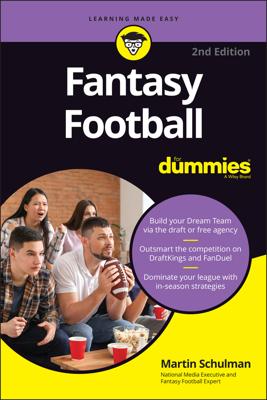-
Blast or dive: The simplest of carries. Usually led by a blocking fullback, the running back takes a quick handoff from the quarterback and hits a hole between an offensive guard and a tackle. The offense calls this run when it needs a yard or two for a first down. The runner lowers his head and hopes to move the pile before the middle linebacker tackles him.
-
Counter: An intentional misdirection run on the part of the offense. The quarterback fakes a lateral toss to one back who’s heading right, running parallel to the line of scrimmage. The quarterback then turns and hands off to the remaining runner in the backfield, generally a fullback, who runs toward the middle of the line, hoping to find an opening between either guard and the center.
-
Draw: A disguised run, which means it initially looks like a pass play. The offensive linemen draw back like they’re going to pass-protect for the quarterback (QB). The quarterback then drops back and, instead of setting up to pass, he turns and hands the ball to the runner.
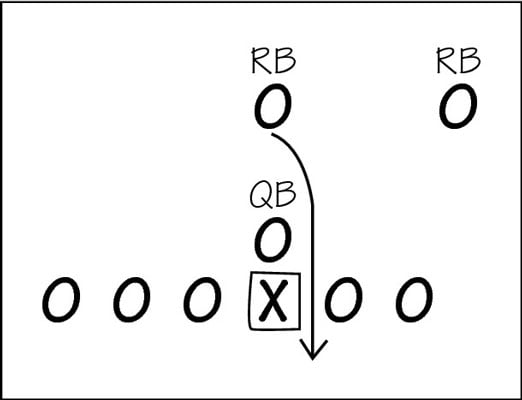
The goal of every draw play is to get the defensive linemen charging at the quarterback, only to be pushed aside by the offensive linemen at the last second. To fool the defense with this run, a team must have an above-average passing game.
-
Off-tackle: A strong-side run, meaning the halfback (HB) heads toward the end of the line where the tight end, the extra blocker, lines up. The runner wants to take advantage of the hole supplied by the tackle, tight end, and his running mate, the fullback (FB). He can take the ball either around the tight end, as shown in the following figure, or outside the tackle. He hopes that the fullback will block the outside linebacker.
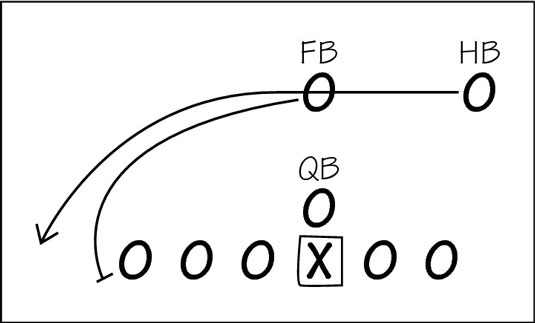
-
Pitch: The quarterback (QB) takes the snap and fakes a handoff to the first back (HB), who’s heading directly toward the line of scrimmage; he then tosses (or pitches) the ball laterally to the other runner (FB), who has begun to move to the outside. The runner can either take the pitch outside or cut back toward the inside. Pitch plays can be designed to go in either direction.
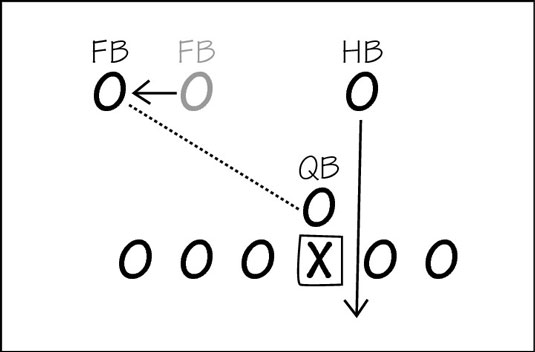
-
Reverse: The halfback (HB) receives the handoff from the quarterback (QB) and then runs laterally behind the line of scrimmage. (The play can be designed for the back to run in either direction.) The ball carrier meets up with a wide receiver (WR) or flanker running toward him and then hands the ball to that receiver or flanker.
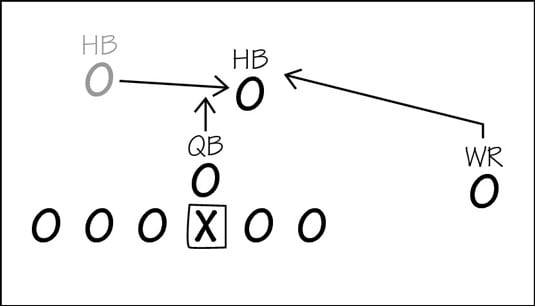
The offensive line blocks as if the ball were intended for the halfback so that the defensive players follow him. After the receiver is in motion and has the ball, he runs in the opposite direction, or against the flow of his own blockers.
-
Slant: This run is exactly like it sounds. Instead of running straight toward the line of scrimmage, the runner (HB) slants his angle outside after he receives the ball. A slant is used to take advantage of defenses that overpursue, allowing offensive linemen to be more effective by pushing the defenders to one side.
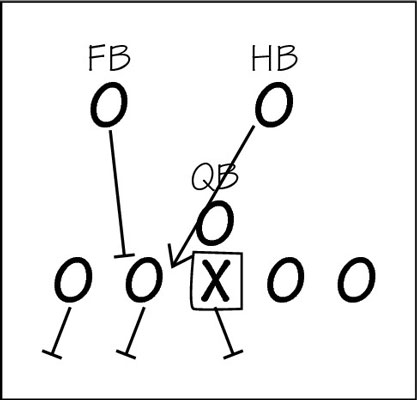
-
Sweep: Begins with two or more offensive linemen (which in this figure are labeled as LG and RG) leaving their stances and running toward the outside of the line of scrimmage. The ball carrier (HB) takes a handoff from the quarterback (QB) and runs parallel to the line of scrimmage, waiting for his blockers to lead the way around the end. The run is designed to attack the defensive end, outside linebacker, and cornerback on a specific side.
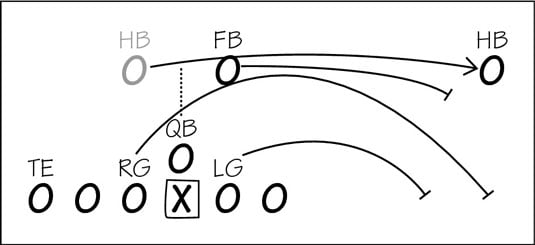
-
Trap: Teams don’t use this run very often because it requires quick and agile offensive linemen, and most teams use big blockers these days. On the trap, a guard (LG in the following figure) vacates his normal area, allowing the defensive player to cross the line of scrimmage and have a clear lane into the backfield. The guard from the opposite side then moves across the line and blocks the defender. This action by the guard is called pulling, hence the term pulling guard. The trap play has to be well-timed, and after the ball carrier receives the ball, he must quickly dart through the hole behind the trap block.
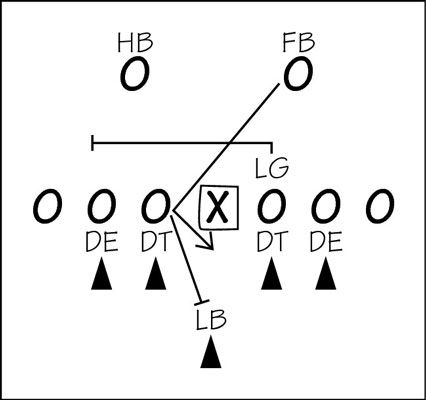
-
Veer: A quick-hitting run in which the ball can be handed to either running back, whose routes are determined by the slant or charge of the defensive linemen. The term veer comes from the back veering away from the defense. The quarterback (QB) hands off to the halfback (HB), who veers to the right behind his blockers.
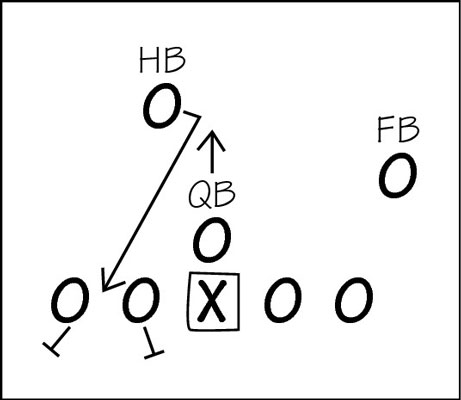
College teams run this play more often than pro teams do because it generally requires a quarterback who’s quick-footed and an excellent ball-handler — in other words, a quarterback who can run if he has to.

